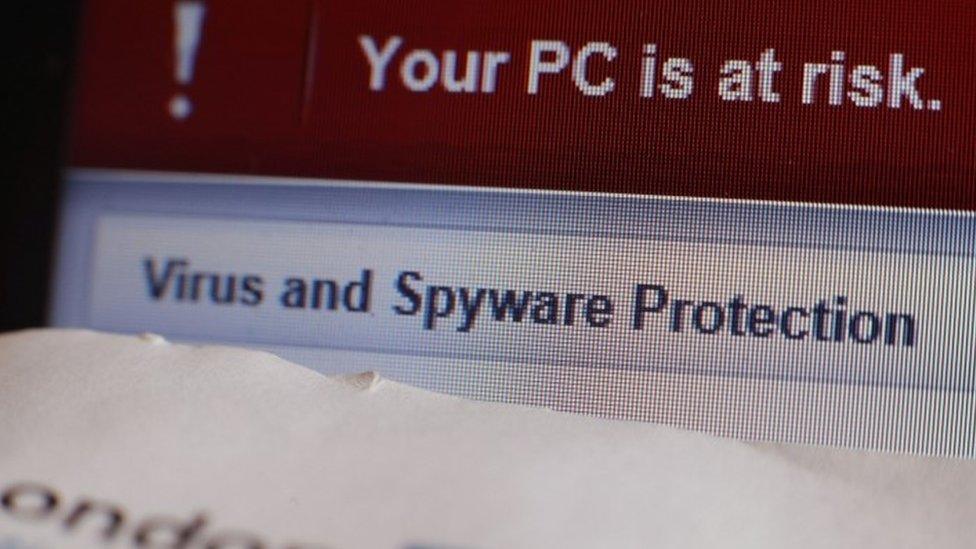Should you pay the WannaCry ransom?
- Published

WannaCry asks its victims to pay up in order to retrieve access to their files - but will that help?
WannaCry has infected hundreds of thousands of computers around the world in 150 countries. The advice is to update Windows to ensure you are protected.
But what do you do if the ransomware arrives on your computer?
The most crucial bit of advice from most experts is: Don't pay the ransom.
For some, £230 ($300) might not seem too high a price to get back irreplaceable data that has been encrypted against your will.
Indeed, a Twitter bot tracking Bitcoin payments to digital wallets set up by whoever is behind WannaCry suggests that some people are quite willing to cough up the cash.
Since they are dealing with criminals, however, there is no reason to expect an honest transaction.
Plus, because of the way in which WannaCry has been designed, the sad fact is that people are very unlikely to regain access to their files, even if they do pay.
"A manual human operator must activate decryption," revealed Matthew Hickey, external, a cyber-security researcher at UK-based firm Hacker House.
And a blog post from security company Proofpoint suggests that a viable way of decrypting files may not actually be built in to the sloppy coding of WannaCrypt, external.
The researchers say they are also yet to receive a reply from those behind the ransomware after trying to contact them.

Some victims are apparently paying the ransom - almost certainly to no avail
Victims are also expected to contact the criminals for a key to unlock their files, said security expert Prof Alan Woodward from the University of Surrey.
"I very much doubt anyone would return your contact request, bearing in mind the attention that is now on this," he told the BBC.
"If anyone pays this ransom they are more than likely going to send Bitcoin that will sit in an address for ever more. No point."
What can you do instead?
The good news is that home users are very unlikely to be affected.
WannaCry has so far spread around business networks via a vulnerability in Windows that most home users will have patched, or will not be at risk from anyway.
This is because the vulnerable bit of Windows will either not be installed, or there will not be any other vulnerable computers on their home network.
However, for those unfortunate enough to have been hit - be that at work or within an institution - it is probably best to assume that access to any files that were not backed up on a drive disconnected from your computer have now been lost forever.
This is why it is so important to back up files on a separate drive or machine regularly.
It is possible to remove WannaCry from your computer once it is there - although the process is not straightforward.
As technical support website Bleeping Computer explains,, external it involves downloading some programs to clean your computer of the infection.
However, the author adds that this will not decrypt files encrypted by the ransomware, proving once again that there is no substitute for a good back-up.
- Published15 May 2017

- Published14 May 2017

- Published14 May 2017
